Last updated on March 28, 2025
At long last, I am putting out my documentary on the effort to create the nation’s first safe injection site in Philadelphia. Below the video, I’ve shared my thoughts on making the film. Thanks for watching and reading.
They were calling it the opioid crisis. I’d been covering it with my producing partner Cassandra Giraldo and together we were making a series of videos titled World of Hurt for VICE’s program on HBO. This was 2017. I don’t hear as much about the opioid crisis nowadays. Granted, I live in Japan now, which averages about 25 opioid related-deaths a year. But I still read US news pretty regularly and I remember seeing headlines like this way more often seven years ago. Back then, journalists had been right to sound the alarm that overdose deaths were reaching record highs. For the first time, drug overdoses surpassed car accidents to become the leading cause of death among Americans aged 25–34. In 2017, there were 47,600 fatal opioid overdoses in the United States — a staggering number, nearly three times higher than fifteen years earlier. The fucked up thing is, it’s only gotten worse: by 2023, that number had climbed to around 80,400, just slightly down from the record high of 82,000 in 2022. But if you do a news search for the world “fentanyl” today, you are much more likely to read about it as a bargaining chip in trade policy than about the hell it continues to inflict on communities around the country. Crisis has dissolved into a state of affairs.
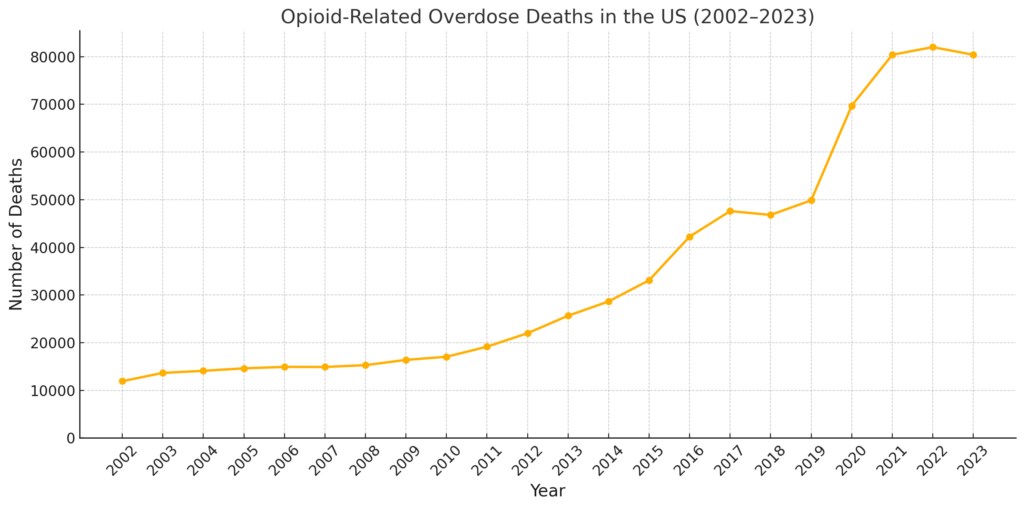
The first video we made was in Kensington, Philadelphia, featuring a librarian that regularly used narcan to resuscitate people dying around her, sometimes even inside the library. That was the first time I’d been to Kensington, and I haven’t been to a rougher place since. The sheer numbers of unhoused, IV-drug addicted people was shocking. They were mostly white and from other areas around the country, now setting up makeshift camps in what was predominantly a community of color. The library sits in the middle of McPherson Square Park, commonly known as “Needle Park”. I’ll never forget the sight of a little black child playing on a swing, while not 20 feet away a shirtless, severely-scabbed 20-something transplant was shooting up. The surrounding grass was completely covered in used needles, many with the sharp tips still exposed. One user told us the story you always hear: normal kid from a good family, gets hurt, doc pushes pills, moves on to harder stuff, and here he is. We gave the librarian the last word: “Until we radically change the way we treat addiction in this country, this community will not strive forward.
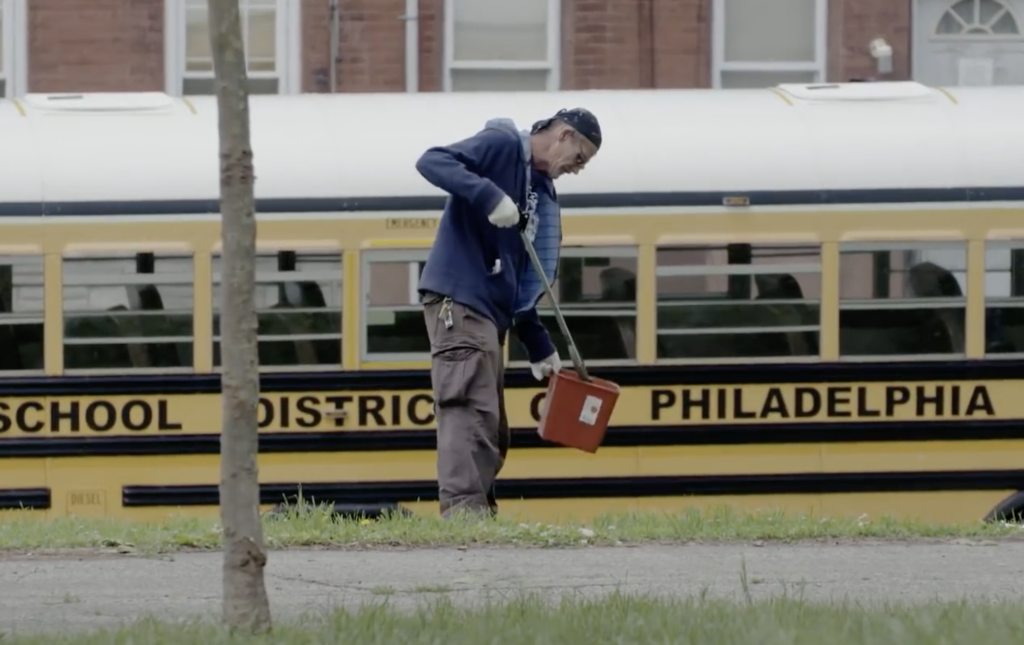
We chased other stories, good stories, like the risks posed to the chronic pain community when opioid access is overly restricted, and how kratom can help some users get off heroin. Eventually I started getting clued into the philosophy of harm reduction and its focus on compassion and de-stigmatization. It’s not about making users admit they have a disease and demanding abstinence, it’s about reducing risks “meeting them where they’re at”. It’s the approach I’d give to my own loved one dealing with addiction, and the approach I’d hope to receive if it was me with a needle in my hand. We saw harm reduction in practice in Philadelphia with clean needle exchange and naloxone (Narcan) distribution. But what harm reduction advocates really wanted, and what had shown real success in other countries, was safe injection sites (SIS). These are places where users can go and inject their drugs under supervision, and if they OD, someone is standing by with naloxone ready to reverse it. The data is clear on these sites. They significantly reduce OD deaths and improve health outcomes. They save lives.
Despite the incontrovertible benefits, an officially sanctioned safe injection site had never existed within the United States. The first in North America was Vancouver’s Insite, founded in 2003. In 2016, as overdoses were skyrocketing, Toronto approved their own sites. But a year later none had actually opened. We went to film a group of harm reduction workers who created their own pop-up SIF, even though they had to technically break the law to do it. The police threatened to shut it down, but ultimately balked. The site began saving lives right away.
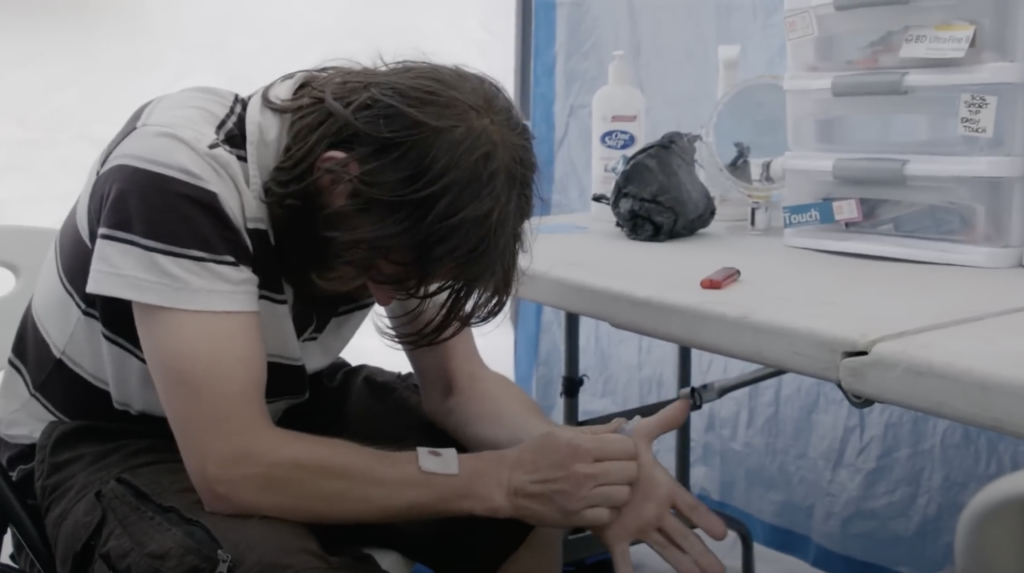
In early 2018, after we did a couple more stories, we got an email from Pia Marcos, who managed New York Harm Reduction Educators’ (NHRHE) syringe exchange program. She invited us to come check out the work they were doing along with their partner, the Washington Heights CORNER Project. Pia linked to a recent video CNN had done on CORNER Project’s own unofficial safe-injection site. Excited to do a story in NYC, Cassie and I went down to meet Pia, as well as what turned out to be the two people who had started Vancouver’s Insite 15 years earlier, Mark Townsend and Liz Evans. Mark and Liz are legends in the harm reduction community and were bringing the same radical advocacy they pioneered in Vancouver to NYC. We didn’t do any filming that day (I’m generally a big believer in scouting and getting to know people before bringing out a camera), but it was the first time I got to see a real harm reduction space in action, and I loved it. There was a whole group of volunteers, and a whole community of people they served.
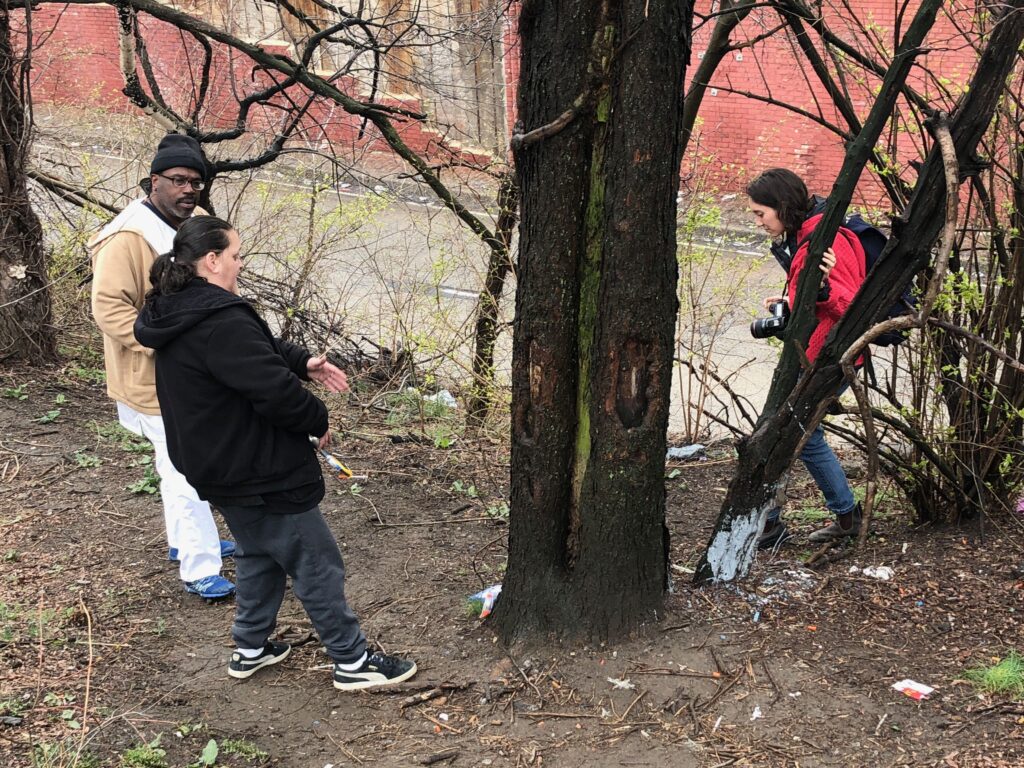
Before we said goodbye, Liz recommended me the book Chasing the Scream, by Johann Hari. By this point my journalistic focus was already shifting from origin stories (like those presented in Sam Quinones’ Dreamland, or the countless articles on Purdue Pharma and the Sackler family’s greed) to the radical praxis that could actually mitigate this crisis. Hari’s book, and his talks with Gabor Mate, helped crystallize that focus.
“If I had to design a system that was intended to keep people addicted, I’d design exactly the system that we have right now,” Gabor would tell me. “I’d attack people, and ostracize them.” He has seen that “the more you stress people, the more they’re going to use. The more you de-stress people, the less they’re going to use. So to create a system where you ostracize and marginalize and criminalize people, and force them to live in poverty with disease, you are basically guaranteeing they will stay at it.”
We never got around to filming with Townsend, Evans and NYHRE. The coverage on VICE’s HBO show was chasing social media metrics and the showrunners didn’t particularly care about harm reduction. In one pitch meeting a senior producer told me that “no one wants to hear from addicts”.
I was coming back from paternity leave and sensed the need to tow the company line. I ended up doing one more story for World of Hurt, but was mostly assigned to Trump-era news pieces, like a steelworker strike or how a trans kid using the girls bathroom had infuriated parents in Oklahoma. I even helped produce an episode on the Kavanaugh-Ford hearing that would go on to win an Emmy. These were important stories, but I remained committed to covering the opioid crisis (or what I started thinking of more as an illicit fentanyl/overdose crisis), even without support from my supervisors.
My reporting had convinced me that overdoses can be by-and-large controlled with the right policies. I was still hung up on the idea that the US needed to do what Canada and much of the world had done and create a government-sanctioned safe injection site. And in October 2018, I came across an article that declared that Philadelphia was intending to do just that. Philly had become the first major city in the US to authorize a SIS, and former Governor Ed Rendell would serve on the board. Cassie and I had filmed our first piece in Philadelphia’s Kensington neighborhood, and it was still the most opioid-traumatized area I had ever seen. This felt like a full circle for me. I could return to the place that had initiated me into the crisis, and now I wanted to capture the best bet to confront it.
I immediately reached out to Jose Benitez, who led Philadelphia’s needle-exchange service Prevention Point. According to the article, he would be president of the new SIS, which was being called “Safehouse”. I told him about our work and that I’d be very interested in documenting Safehouse becoming a reality. A few days later I got an email back from Ronda Goldfein, Safehouse’s vice president, who also led the AIDS Law Project of Pennsylvania. Ronda was a lawyer by trade. Her work helping AIDS patients made clear to me she was devoted to helping the socially marginalized. She was naturally a bit cautious, but also media savvy, partially owing to being married to an accomplished journalist herself. She invited me down to meet with her and Jose and pitch them on the project.
Over dinner at a BYOB Italian spot, I laid out what I had in mind. I wanted to cover the effort to open Safehouse, with as much access as they would give me, for as long as it took. I would also capture the Kensington neighborhood, the obvious location for Safehouse. I told them I believed in harm reduction and thought their efforts would be a game changer in US drug policy. Ultimately they agreed to let me make the film.
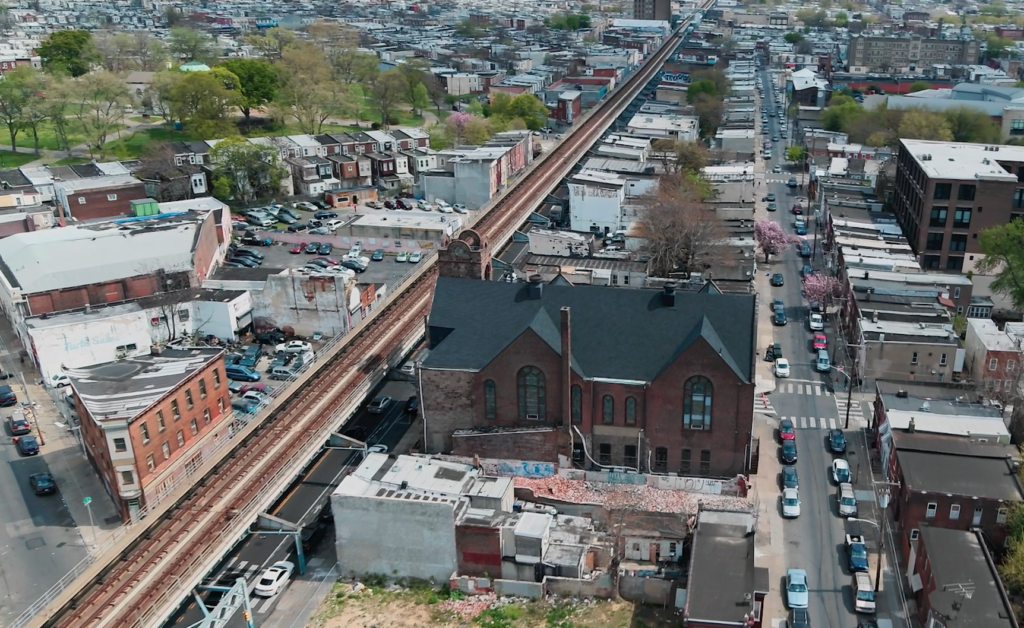
Knowing the VICE higher-ups were growing lukewarm on opioid coverage, I started filming with Safehouse on the sly. My plan was to get enough compelling footage that they had to greenlight a longer form documentary. In December, I was invited to film a meeting of harm reduction advocates at Prevention Point. The footage itself was less than riveting, but it did allow me to introduce myself to a lot of the stakeholders. Then, in late January 2019, Ronda invited me to film her and Jose giving a tour to some fundraisers of a facility in Kensington that they had just been generously offered (the landlord had recently lost his own son to overdose). This felt like a real step forward.
In the interview I filmed afterwards, Jose told me he thought they could be up and running in a month. There was one major sticky point, and that was that the Trump administration had already indicated their strong opposition. They wanted to continue the same failed War on Drugs policies that had helped give rise to the crisis and believed safe injection sites violated what was known as the “crack house statute” (a law authored by none other than Joe Biden).
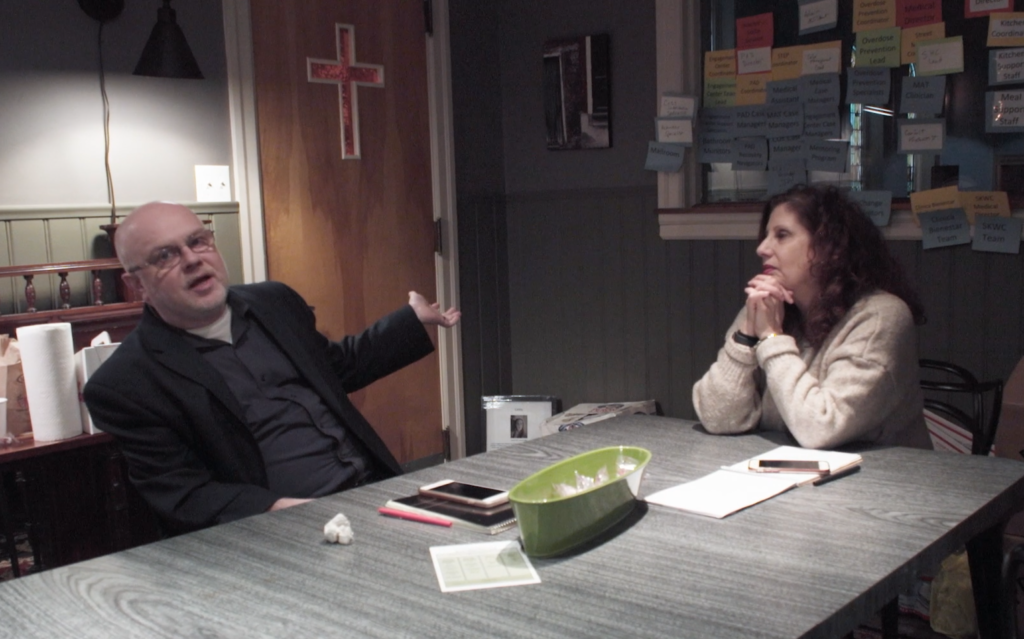
I took the train back home to New York knowing that I now had a real story on my hands. A revolutionary drug policy initiative up against a reactionary federal government. Alas, a VICE documentary it would not be. Four days after I filmed that facility tour, VICE let me go, along with 10 percent of the company’s staff. More than anything, I felt relief. I was never meant for the nightly content grind, especially working for people I now realize were mostly neoliberal institutionalists. I was concerned about my career and what was next, especially since I had three other people materially depending on my livelihood. But I knew I had something good going with this Safehouse project. The day I was laid off I emailed Ronda and asked if I could keep filming the documentary as an independent project. She agreed right away.
This month, more than six years after I started filming, I published the documentary on Deterritoria’s youtube channel (and embedded at the top of this post). I have never worked harder on a film in my life. After losing all the trappings of a well-funded media machine, I had to fund my own shoots and edit out of my bedroom. Thankfully, I found an early and key collaborator in my good friend and ex-VICE colleague (laid off the same day!) in Roman Safiullin. Roman was predominantly an editor, but also had a lot of producing chops. He helped film several key scenes with me and also did an incredible job in the edit.
But there’s no way this film would have come to be without Christopher Moraff. I had been tracking Chris’ reporting work on all things drug related for about a year. He co-hosted a podcast called Narcotica along with two other stellar journalists that I listened to regularly. Chris was a Philly native and did riveting embedded reports about Kensington. I hit him up and told him I was making a doc on Safehouse and asked if he wanted to be involved. He invited me down and gave me a tour of Kensington. Chris wasn’t afraid to talk to anyone. I had always felt quite uncomfortable in the neighborhood, especially with a camera, but Chris just walked around like he belonged there, and he did. He was an ex-user himself, and first came to know Kensington like all the people huddling on the sidewalks in makeshift encampments. He was, and is, the ultimate authority on Kensington.
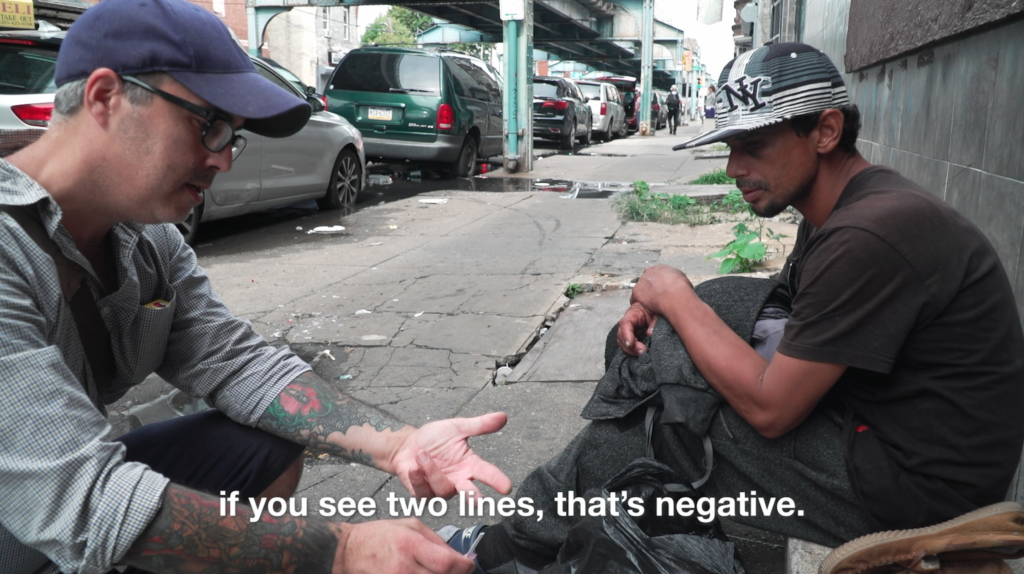
Chris also had the savvy and contacts to raise funds for his work. He felt that with our access and bonafides, we could get some respectable grant money. In the fall of 2019, I put together some pitch material that Chris sent over to David Menschel, who runs Vital Projects. Menschel liked what we had and gave us the money to fund the film in earnest.
Around this time, the action was heating up with Safehouse. They had been sued by the Trump administration and were fighting them in federal court. Then, in October, the judge reached a decision: Safehouse had won. They had the right to open. For the first time, a federal judge had declared safe injection sites legal in the United States.
I had been in regular contact with Ronda and knew that Safehouse was planning to open sometime in early March 2020. I also knew, but had been asked to keep off-the-record, that they were planning to open their first site not in Kensington (where Prevention Point already had a large presence), but South Philadelphia. South Philly was second in fatal ODs numbers, but nowhere close to Kensington. Ronda alluded to political expediency and that after South Philly’s proven success Kensington would get a site as well.
Up to this point I had been filming the documentary piecemeal as I kept my day job as an editor. But now that we had some grant money, I made plans to spend a couple months in Philadelphia and document Safehouse’s opening and properly capture Kensington and the people that desperately needed its services.
The day after I got there, Safehouse held a press conference at Governor Rendell’s office. In the month’s since a federal judge had granted them the right to open, everyone on the Safehouse team had felt they had cleared the only major hurdle. Boy were they wrong. As soon as Ronda announced that South Philly would host the first site, the conference was taken over by rabid NIMBYists. The next day, a MAGA army rallied at the intended site in South Philadelphia (a small section of a local hospital). Local politicians, smelling blood, voiced their own opposition. Soon, Fox News weighed in. A city council meeting roundly condemned Safehouse and threatened to block its opening. By the week’s end, the hospital that was to host the site backed out. Safehouse had the legal mandate, but no home.
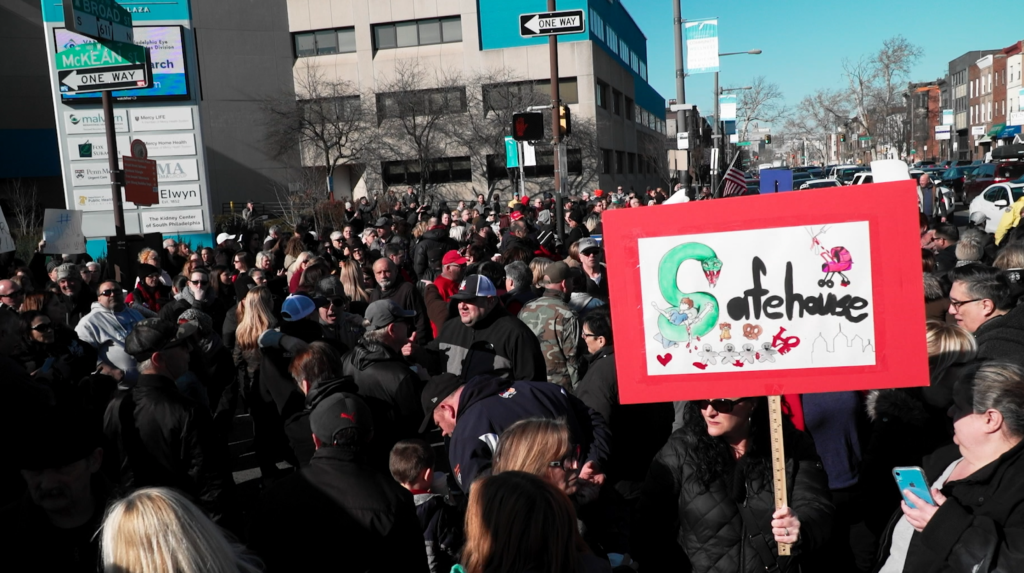
I filmed with Ronda and Rendell as they figured out how to regroup. As Ronda summed it up, “We can’t kind of get that mix of, like, convenient enough for the participants, but far enough away from people who are likely to complain”. As they confronted the impasse, I decided to focus on covering Kensington and profile some of the people there. Chris had found a compelling character in Mike, who had lived on the streets of Kensington for years, but was now in an apartment sponsored by Prevention Point. Mike was still an active user, but made honest money cleaning storefront windows. He was also a decent human being and the kind of guy you wanted to see make it out the other side. He had saved several lives with narcan, and was one bad batch away from needing his own life saved.
It was around this time I also met Feek. He grew up in Kensington. His mom had been addicted to heroin and he had sold it himself. But Feek was a creative soul. He spent his days producing music. One day he bought a camera at the local pawnshop and started filming around the neighborhood. When I went to meet Feek and look at his footage, I knew he could capture Kensington the way I couldn’t. Rather than try and sneak my own shots of camera-wary users, I interviewed Feek and featured what he had filmed. I think his perspective is vital to the story of Kensington.
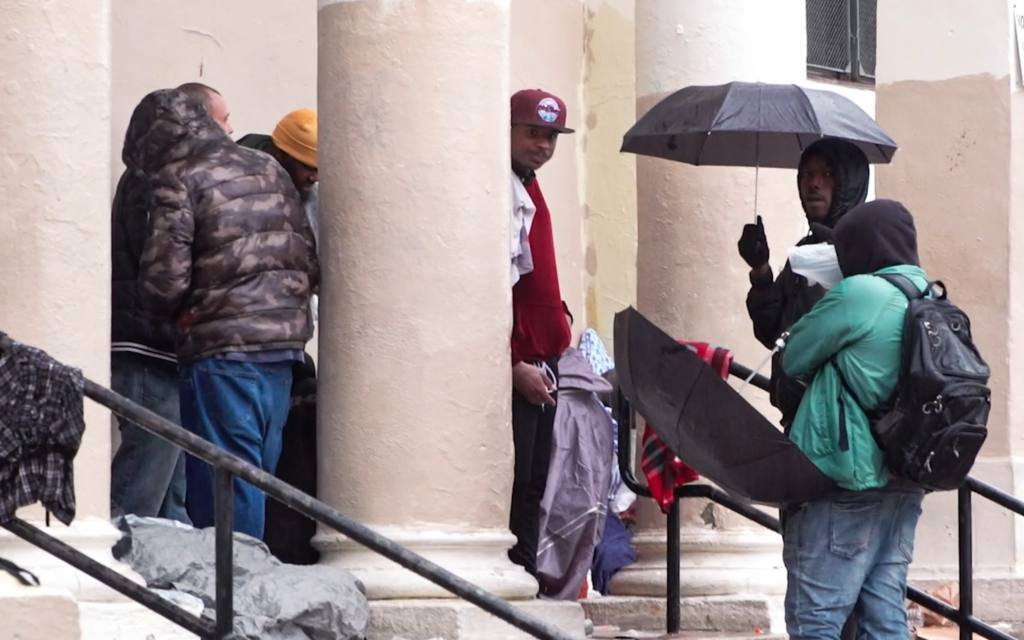
Safehouse was a local story with national implications, but it was something that happened on the global scale that was really the most decisive moment. On March 23, 2020, an official stay-at-home order was issued to all Philadelphians. Suddenly, the opioid epidemic was overshadowed by the COVID pandemic. I rented a car, headed up to NYC, picked up my wife, kids, and cat and drove overnight to my parents home in North Carolina. I then drove back to Philadelphia not quite sure what was I was filming anymore. Soon it became clear that there would be no further action from Safehouse until the lockdown was over. I stayed for a couple more weeks and captured Kensington as Covid set in, filming with people like Roz Pichardo, A Kensington fixture who routinely hands out naloxone and has saved many hundreds of lives. Ultimately I decided to return to my family and hunker down. A couple months later George Floyd was murdered, setting off the largest protests in US history.
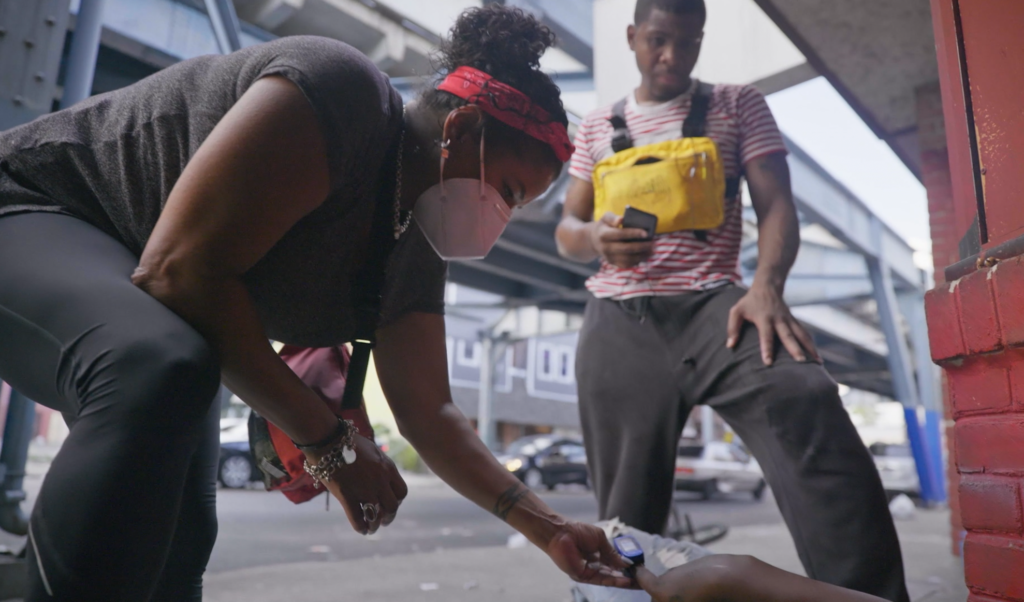
The judge who had granted Safehouse the right to open issued a stay, citing the unrest and the pandemic, blocking Safehouse from opening until the case could be reviewed by an appeals court. That court would ultimately reverse the lower judge’s decision, declaring safe injection sites illegal. Safehouse no longer had the legal standing to open. The opportunity had been lost.
I didn’t want to believe this was the end of the story. But I also know when to shelve a project. Like most people, my life and career had been significantly disrupted by post-pandemic reality. Luckily, with everyone sheltering at home, the demand for media content was at an all time high. I was able to keep steady gigs as an editor and work from home. Eventually, I started thinking “home” didn’t have to be New York. Living in the city had become untenable with a family of four under one income. Health insurance costs alone were over $2000 a month. Add in rent and the day-to-day expenses and it was impossible. By 2021 New York felt to me like a city in decline. You had to be rich just to get by. Hate crimes, particularly against Asians, were surging. My wife, originally from Japan but had lived in the US for half her life, understandably didn’t feel safe riding the subway. We decided to test how “remote” I could be and moved to Japan in August of 2021.
Aside from a couple interviews, I hadn’t filmed anything for Safehouse in almost a year. We had a rough edit, but it lacked an ending. Then in November Chris sent me a note that New York City was on the verge of opening sanctioned safe injection sites (the US Circuit Court that had decided against Safehouse didn’t have jurisdiction in New York). A few days later Mayor Bill DiBlasio issued a press release making it official. In what would be another full circle for me, the sites would be hosted by NYHRE and the Washington Heights Corner project, the harm reductionists I had met back in 2018 (now joining forces as OnPointNYC). On November 30th, the sites opened, becoming the first official safe injection sites in the United States.
I went to the US in December to see family and went to New York in early January 2022. Chris had secured us access to film inside the facility and interview executive director Sam Rivera. Finally, I was able to see a safe injection site in the US in action, as a direct implementation of public policy. OnPoint had been open for 5 and a half weeks when I interviewed Sam, and they had already reversed 80 overdoses. Saving 15 lives a week was a pretty good demonstration of success.
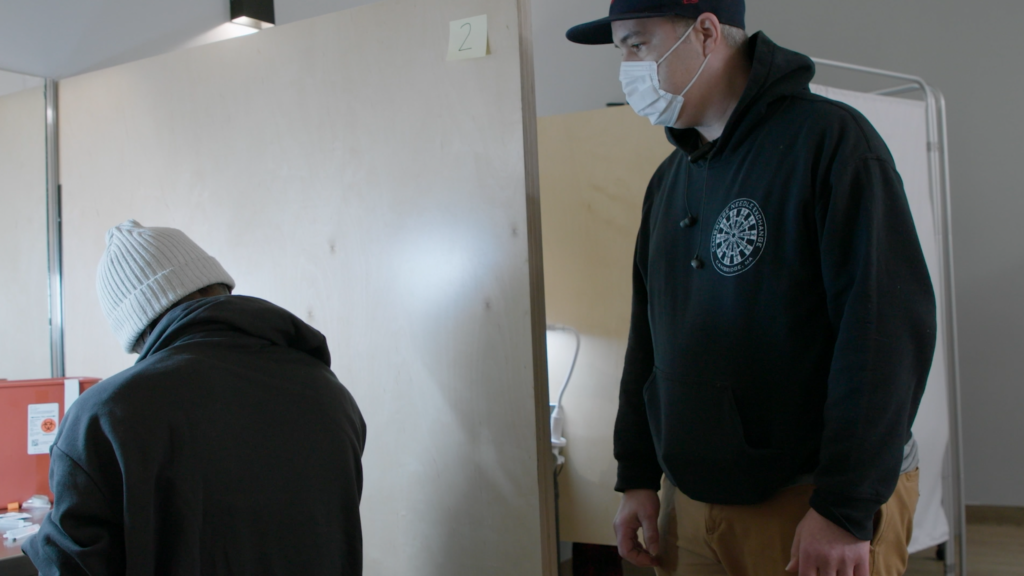
I returned to Japan wondering if this documentary had found its ending. But David Menschel, who had so generously given us the majority of our funding, said we should wait and see if Safehouse can open under Biden. Ronda was also optimistic that Safehouse and the Biden DoJ could come to some agreeable terms. But in the end they didn’t. Though they paid lip service to Safehouse, the Biden administration ultimately stonewalled and delayed at every turn.
Chris and I always talked about this film being a roadmap for future harm reductionists who wanted to open their own safe injection sites in their cities. I think Sam’s words at the end provide the film’s most crucial lesson: “One of the things we knew, especially in watching what happened with Phily, it was important to open up where we already exist, so the NIMBY issue can’t really come in. They can try to bring it up, but we already been here. We’re here. We’re here providing a service. We’re not a new service, we’re an improved service. Language really matters”.
As this film comes out, OnPoint is still operating. But it faces an existential threat with the new Trump administration, as federal lawmakers ask him to shut it down. Sadly, in the short term, that seems more likely than any new official sites opening. I believe, however, that any short term setbacks can’t undo the milestone of safe injection sites becoming a reality in the US. These sites save lives. Moreover, they are in keeping with the policy approach that allows people to move past their addictions, which is the only humane policy to have.
Personally, putting this film out offers some closure. For over six years, through being laid off, through a pandemic, through a move across the world, it lingered, needing to be told. I hope it does some service to the cause and can be a useful guide to harm reductionists in the future.
